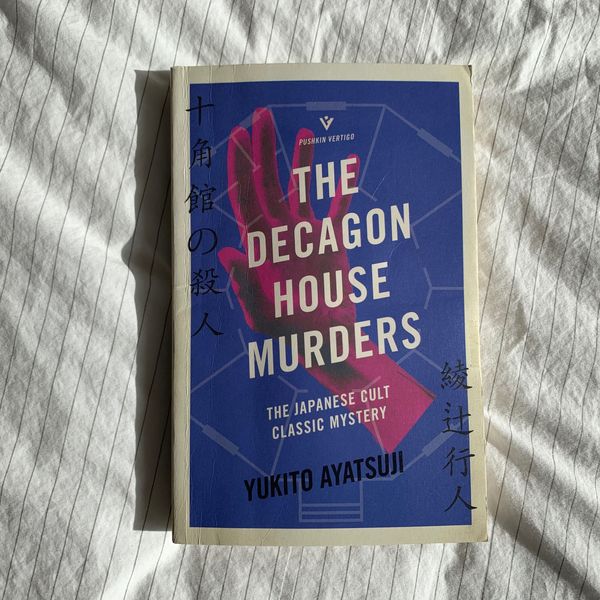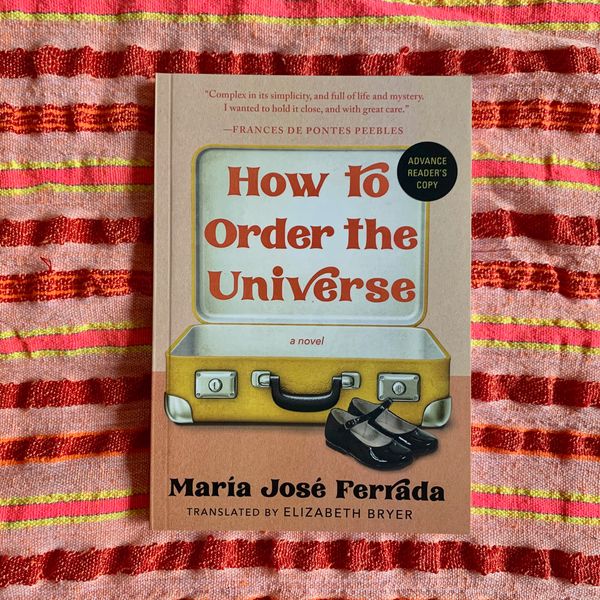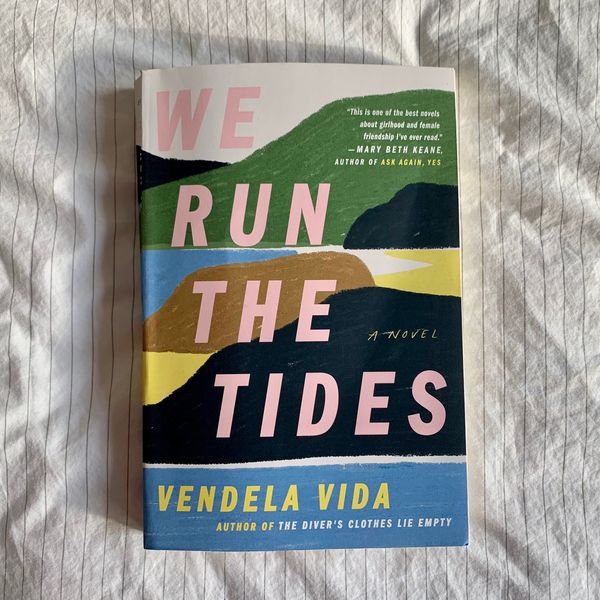
To commemorate the one-year anniversary of lockdown, this month’s theme is “insomnia.” I’m not a doctor (uh, obviously) but I’ve discovered a few tips and tricks over the past year of nonstop anxiety. Here are my top four in ascending order.
4. Lie in bed and pretend you’re a slowly decomposing fruit.
3. Picture the last time you were in a physically intolerable situation, like caught outside in the snow with no jacket or suffering from food poisoning on a cross-country bus trip. Perform a detailed analysis of that discomfort: Did your back hurt? Thighs chafe? Teeth chatter? Neck sweat? Then perform a comparative inventory of your current situation, which hopefully involves being sandwiched between cozy layers of padding in a room insulated from the outdoors. Toggling back-and-forth between the two frames of reference always helps coax me into the abyss.
2. Epsom-salt bath. You must stay in for at least 20 minutes. Imagine all those molecules of liquid magnesium sulfate osmosing through your skin and saying “sweet dreams” to each body part. Good night kidneys, good night hair / Good night, bladders everywhere.
1. Read (see below) by candlelight. The flickering offers a visual lullaby.
The Decagon House Murders by Yukito Ayatsuji
Fiction, 1987
Behold, the perfect escapist drug! If I could crush this book into a powder and snort it, I would. It’s a cult-classic Japanese mystery loosely based on Agatha Christie’s And Then There Were None. What you should know, first, is that the form of “book” functions here much like the body of a fashion model on the runway, in that its function is to be a structure upon which to hang something else. The “something else” here is a puzzle. You’ll see what I mean when you start reading: The characters are flat, there is nary a poetic line to be found, and a smart fifth-grader could motor through it. This is all intentional; the book is a prime example of the shin honkaku genre — a Japan-specific reboot of the classic whodunit. The genre is defined by a few elements. Is there a shocking twist? Are the clues subtly planted? Does it take place in an intriguing closed environment? Could a reader plausibly solve it? If so, congrats, it might be a shin honkaku.
In this case, a group of university students goes to visit a misty island off the coast of Japan where a gruesome crime has recently occurred. They stay in a ten-sided house and are serially murdered. One of the murders involves lipstick. I won’t spoil anything else. Once again, this is less a novel than an ingenious card trick transformed into the shape of bound pages printed with text, so enter accordingly and have a ball. If you don’t believe me, just ask the universe: There’s an asteroid named after the author!
RIYL: The Westing Game, the curvaceous shape of the word “bludgeon,” Derek DelGaudio, cryptic (or “British-style”) crossword puzzles
How to Order the Universe by María José Ferrada
Fiction, February 16
Advance copies of books occasionally come with a little note from the editor or someone who works at the publishing house. The purpose of the note is to deliver praise and hype up the reviewer for an explosive literary experience, though it can often seem like it was written at gunpoint. The one at the beginning of this book, however, was genuinely impassioned and contained a sentence that intrigued me: “When I finished the last pages [of this novel], I truly had to stare at a wall.” That was written by a woman named Nanci McCloskey, who is identified as the director of marketing and sales at Tin House. I knew the feeling Nanci had described — it’s the human equivalent of a computer’s spinning rainbow beachball — and I was moved by her invocation of it. I simply had to find out whether the book would make me stare at a wall.
Well. It sure did! The narrator of How to Order the Universe is M, a 7-year-old girl who loves the following: logistics, negotiating, and smoking her father’s cigarettes. (“Your mother can’t know about this.”) Her dad is a traveling hardware salesman in Pinochet-era Chile. Together they hawk screwdrivers, fudge expense reports, and listen to the radio. M has an emotional intelligence so acute that it borders on mind-reading. The novel is about the length of a baby carrot and its prose is so spare it almost reads like a blueprint — but you know what they say about good things and small packages.
RIYL: Roberto Bolaño, ploys, co-conspiring, the Charles and Ray Eames film Powers of Ten
We Run the Tides by Vendela Vida
Fiction, February 9
There’s a ritzy neighborhood in San Francisco called Sea Cliff, which I remember from my childhood as being 100 percent fogbound and filled with houses the size of Hearst Castle. It was a popular trick-or-treating spot and I, along with other children, migrated toward the neighborhood each Halloween in search of movie-theater-size candy bars and actual cash handouts.The only family I knew from Sea Cliff consisted of a father who had something to do with Starbucks, his wife who collected fancy glass balls, and their three children Krystelle, Damon, and Sterling — the names a reference to crystals, diamonds, and silver, respectively. Krystelle was lovely and quite tall, and she liked to use my shoulder as an armrest when we hung out.
This is relevant only because the neighborhood of Sea Cliff is itself, as they often say of New York City when it comes to films, “a character” in Vendela Vida’s novel, where it is depicted with an accuracy that extends to the book’s true subjects: girlhood, physical danger, independence and game-playing. (Vida even includes a reference to the trick-or-treat cash — now that’s research!) Maria Fabiola is the heiress to a sugar fortune and part of a group of girls who all attend the same private school. She is the one in her group — and there’s always one — who hits the puberty jackpot, developing myriad physical enchantments while her friends go to war with blackheads. One day, Maria Fabiola vanishes. Another member of the group follows. The disappearances are not what they seem, and to find out why, you’ll have to read more than this 275-word blurb can honorably divulge.
RIYL: Beaches in winter, French braids, coming up with white lies, Mary Karr, The Virgin Suicides, reflecting on your plight
WHY DON’T YOU …
• Absorb the history of sumptuary law from a STANFORD PROFESSOR whose book contains a section titled Decorative Orthodontic Devices (a.k.a. Grillz)?
• Scream into a pillow about how much YOUR DUMB JOB SUCKS and then collapse into 400 pages about a woman who does similar things, but in Japan?
• Prowl the LOWER EAST SIDE with Richard Price? Nobody writes a better procedural!
• Blend two scoops of Roald Dahl with one cup of The Twilight Zone, add a pinch of Jeffrey Archer, pour it into a PIE CRUST, bake 45 minutes, and dig in?
• Slip into an understated and atmospheric COMING-OF-AGE TALE set in a surf community with a seamy underbelly — which is the best kind of underbelly, after all?
• Consider whether one of my ALL-TIME FAVORITE NOVELS will enter your personal hall of fame?
SUGGESTED PAIRING
Transform the ongoing hell of 2021 into a comparative paradise by plunging into Philip K. Dick’s greatest novel, Ubik!
Every editorial product is independently selected. If you buy something through our links, New York may earn an affiliate commission.
More From This Series
- Matrix and 9 Other Reads I Can’t Get Out of My Head
- The Listening House and 9 Other Reads I Can’t Get Out of My Head
- The Plot and 8 Other Reads I Can’t Get Out of My Head





